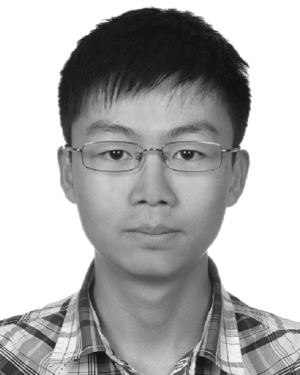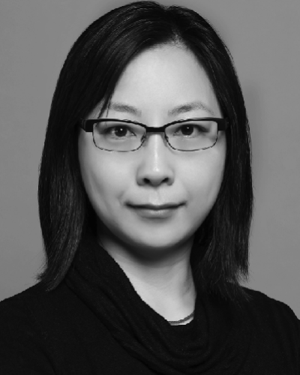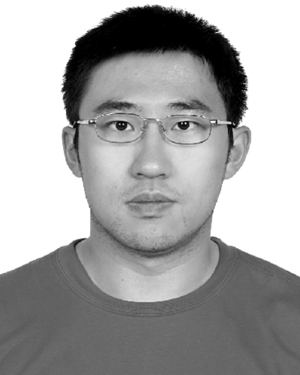Abstract:
In this paper we derive the Fisher information matrix (FIM) and Cramér-Rao lower bound (CRLB) for positioning a terminal with a planar large intelligent surface (LIS), un...Show MoreMetadata
Abstract:
In this paper we derive the Fisher information matrix (FIM) and Cramér-Rao lower bound (CRLB) for positioning a terminal with a planar large intelligent surface (LIS), under Rician channel. For a disk-shaped continuous LIS and a terminal located on the central perpendicular line (CPL) of the LIS, we obtain expressions for the CRLBs in the form of a single integration. For the situation that the terminal is far from the LIS compared to the LIS radius and the situation with an asymptotically large LIS, closed-form approximations of the CRLBs are derived, based on which scalings and properties of the positioning precision with respect to different system parameters are obtained. For positioning a terminal with arbitrary location, we derive closed-form expressions of the CRLBs when the terminal is far from the LIS and the wavelength is small. When the surface area is small and the path-loss exponent is not larger than 5, the CRLBs of a CPL-terminal are smaller than those of a non-CPL terminal for all three dimensions, while the reverse may occur when the surface area grows large enough. We also carry out a comparative study of the continuous and discrete models of the LIS. Numerical results are presented to validate the precision of our theoretical analysis and approximated performance.
Published in: IEEE Transactions on Wireless Communications ( Volume: 23, Issue: 7, July 2024)
Funding Agency:

Department of Electrical and Computer Engineering, University of Alberta, Edmonton, AB, Canada
Jianqiang Lin received the bachelor’s degree in information engineering from Beihang University, Beijing, China, in 2015, and the Ph.D. degree in digital signal processing from the Department of Electrical and Electronic Engineering, The University of Hong Kong, Hong Kong, in 2020. He is currently a Post-Doctoral Fellow with the Department of Electrical and Computer Engineering, University of Alberta, Canada. His current ...Show More
Jianqiang Lin received the bachelor’s degree in information engineering from Beihang University, Beijing, China, in 2015, and the Ph.D. degree in digital signal processing from the Department of Electrical and Electronic Engineering, The University of Hong Kong, Hong Kong, in 2020. He is currently a Post-Doctoral Fellow with the Department of Electrical and Computer Engineering, University of Alberta, Canada. His current ...View more

Department of Electrical and Computer Engineering, University of Alberta, Edmonton, AB, Canada
Yindi Jing (Senior Member, IEEE) received the B.Eng. and M.Eng. degrees in automatic control from the University of Science and Technology of China, Hefei, China, in 1996 and 1999, respectively, and the M.Sc. and Ph.D. degrees in electrical engineering from the California Institute of Technology, Pasadena, CA, USA, in 2000 and 2004, respectively. From October 2004 to August 2005, she was a Post-Doctoral Scholar with the D...Show More
Yindi Jing (Senior Member, IEEE) received the B.Eng. and M.Eng. degrees in automatic control from the University of Science and Technology of China, Hefei, China, in 1996 and 1999, respectively, and the M.Sc. and Ph.D. degrees in electrical engineering from the California Institute of Technology, Pasadena, CA, USA, in 2000 and 2004, respectively. From October 2004 to August 2005, she was a Post-Doctoral Scholar with the D...View more

Department of Mathematical and Statistical Sciences, University of Alberta, Edmonton, AB, Canada
Xinwei Yu received B.S. degree in mathematics and the M.S. degree in computational mathematics from Peking University, Beijing, China, in 1997 and 2000, respectively, and the Ph.D. degree in applied and computational mathematics from the California Institute of Technology, Pasadena, CA, USA, in 2005. From 2005 to 2008, he was a CAM Assistant Professor with the Department of Mathematics, University of California, Los Angel...Show More
Xinwei Yu received B.S. degree in mathematics and the M.S. degree in computational mathematics from Peking University, Beijing, China, in 1997 and 2000, respectively, and the Ph.D. degree in applied and computational mathematics from the California Institute of Technology, Pasadena, CA, USA, in 2005. From 2005 to 2008, he was a CAM Assistant Professor with the Department of Mathematics, University of California, Los Angel...View more

Department of Electrical and Computer Engineering, University of Alberta, Edmonton, AB, Canada
Jianqiang Lin received the bachelor’s degree in information engineering from Beihang University, Beijing, China, in 2015, and the Ph.D. degree in digital signal processing from the Department of Electrical and Electronic Engineering, The University of Hong Kong, Hong Kong, in 2020. He is currently a Post-Doctoral Fellow with the Department of Electrical and Computer Engineering, University of Alberta, Canada. His current research interests include array signal processing, subspace identification, adaptive filtering, compressed sensing, large intelligent surface, and wireless communications.
Jianqiang Lin received the bachelor’s degree in information engineering from Beihang University, Beijing, China, in 2015, and the Ph.D. degree in digital signal processing from the Department of Electrical and Electronic Engineering, The University of Hong Kong, Hong Kong, in 2020. He is currently a Post-Doctoral Fellow with the Department of Electrical and Computer Engineering, University of Alberta, Canada. His current research interests include array signal processing, subspace identification, adaptive filtering, compressed sensing, large intelligent surface, and wireless communications.View more

Department of Electrical and Computer Engineering, University of Alberta, Edmonton, AB, Canada
Yindi Jing (Senior Member, IEEE) received the B.Eng. and M.Eng. degrees in automatic control from the University of Science and Technology of China, Hefei, China, in 1996 and 1999, respectively, and the M.Sc. and Ph.D. degrees in electrical engineering from the California Institute of Technology, Pasadena, CA, USA, in 2000 and 2004, respectively. From October 2004 to August 2005, she was a Post-Doctoral Scholar with the Department of Electrical Engineering, California Institute of Technology. From February 2006 to June 2008, she was a Post-Doctoral Scholar with the Department of Electrical Engineering and Computer Science, The University of California, Irvine. In 2008, she joined the Department of Electrical and Computer Engineering, University of Alberta, where she is currently a Professor. Her research interests include wireless communications and signal processing. She was a member of the IEEE Signal Processing Society Signal Processing for Communications and Networking (SPCOM) Technical Committee and the NSERC Discovery Grant Evaluation Group for Electrical and Computer Engineering. She was an Associate Editor of IEEE Transactions on Wireless Communications and a Senior Area Editor of IEEE Signal Processing Letters.
Yindi Jing (Senior Member, IEEE) received the B.Eng. and M.Eng. degrees in automatic control from the University of Science and Technology of China, Hefei, China, in 1996 and 1999, respectively, and the M.Sc. and Ph.D. degrees in electrical engineering from the California Institute of Technology, Pasadena, CA, USA, in 2000 and 2004, respectively. From October 2004 to August 2005, she was a Post-Doctoral Scholar with the Department of Electrical Engineering, California Institute of Technology. From February 2006 to June 2008, she was a Post-Doctoral Scholar with the Department of Electrical Engineering and Computer Science, The University of California, Irvine. In 2008, she joined the Department of Electrical and Computer Engineering, University of Alberta, where she is currently a Professor. Her research interests include wireless communications and signal processing. She was a member of the IEEE Signal Processing Society Signal Processing for Communications and Networking (SPCOM) Technical Committee and the NSERC Discovery Grant Evaluation Group for Electrical and Computer Engineering. She was an Associate Editor of IEEE Transactions on Wireless Communications and a Senior Area Editor of IEEE Signal Processing Letters.View more

Department of Mathematical and Statistical Sciences, University of Alberta, Edmonton, AB, Canada
Xinwei Yu received B.S. degree in mathematics and the M.S. degree in computational mathematics from Peking University, Beijing, China, in 1997 and 2000, respectively, and the Ph.D. degree in applied and computational mathematics from the California Institute of Technology, Pasadena, CA, USA, in 2005. From 2005 to 2008, he was a CAM Assistant Professor with the Department of Mathematics, University of California, Los Angeles. In July 2008, he joined the Department of Mathematical and Statistical Sciences, University of Alberta, where he is currently a Professor and the Director of the Applied Mathematics Institute (AMI). He received the SIAM Richard C. DiPrima Prize in 2006.
Xinwei Yu received B.S. degree in mathematics and the M.S. degree in computational mathematics from Peking University, Beijing, China, in 1997 and 2000, respectively, and the Ph.D. degree in applied and computational mathematics from the California Institute of Technology, Pasadena, CA, USA, in 2005. From 2005 to 2008, he was a CAM Assistant Professor with the Department of Mathematics, University of California, Los Angeles. In July 2008, he joined the Department of Mathematical and Statistical Sciences, University of Alberta, where he is currently a Professor and the Director of the Applied Mathematics Institute (AMI). He received the SIAM Richard C. DiPrima Prize in 2006.View more


